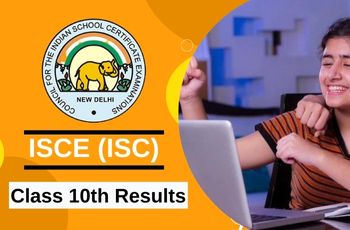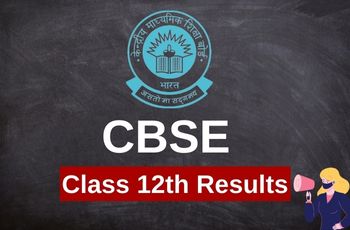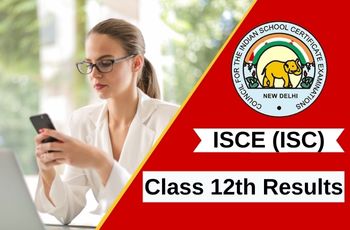Chapter 6: My Childhood
English
(www.olympiadsuccess.com)
Chapter 6: My Childhood
Class: IX
Exercise number - 1
Question 1
Answer these questions in one or two sentences each.
- Where was Abdul Kalam’s house?
- What do you think Dinamani is the name of? Give a reason for your answer.
- Who were Abdul Kalam’s school friends? What did they later become?
- How did Abdul Kalam earn his first wages?
- Had he earned any money before that? In what way?
Answer 1
- In the mosque street of Rameswaram, the former Madras state was the house of Abdul Kalam.
- Dinamani could be the name of a newspaper on which he tried to gain information about the Second World War. Abdul Kalam’s brother-in-law once read the headlines from Dinamani.
- Abdul Kalam had three close friends during his school days. They are Ramanandha Sastry, Aravindan and Sivaprakasan. Ramanandha Sastry took over the priesthood of the Rameswaram temple from his father; Whereas Aravindan started a business of arranging transport for visiting pilgrims and Sivaprakasan became a catering contractor for the Southern Railways.
- Kalam’s cousin Samsuddin was a newspaper distributor in Rameswaram and that time he was looking for someone to help him to catch the newspaper bundles. Later Abdul Kalam decided to help his cousin and earned his wages.
- Yes, when he started helping his cousin he had earned some money. There was a sudden demand for tamarind seeds when the Second World War broke out. He earned one anna for a day, by collecting the seeds and sold them at a provision shop on Mosque Street.
Question 2
Answer each of these questions in a short paragraph (about 30 words).
- How does the author describe: (i) his father, (ii) his mother, (iii) himself?
- What characteristics does he say he inherited from his parents?
Answer 2
- (i) Jainulabdeen, Kalam’s father neither had much of formal education nor much wealth. He avoided all unnecessary comforts and luxuries. Though he did not have education or wealth he possessed great innate wisdom and a true generosity of spirit.
(ii) Ashiamma, Kalam’s mother was an ideal helpmate to her husband. The author certainly quoted that far more outsiders ate with them than all the members of their own family put together as she fed many people every day.
(iii) The author describes himself as one of many children. He was a short boy with rather undistinguished looks, born to tall and handsome parents. He also had a very secure childhood, both materially and emotionally.
- Characteristics such as honesty and self-discipline were inherited from his father and faith in goodness and deep kindness from his mother.
Question 3
Discuss these questions in class with your teacher and then write down your answers in two or three paragraphs each.
- "On the whole, the small society of Rameswaram was very rigid in terms of the segregation of different social groups," says the author.
(i) Which social groups does he mention? Were these groups easily identifiable (for example, by the way they dressed)?
(ii) Were they aware only of their differences or did they also naturally share friendships and experiences? (Think of the bedtime stories in Kalam’s house; of who his friends were; and of what used to take place in the pond near his house.)
(iii) The author speaks both of people who were very aware of the differences among them and those who tried to bridge these differences. Can you identify such people in the text?
(iv) Narrate two incidents that show how differences can be created, and also how they can be resolved. How can people change their attitudes?
- (i) Why did Abdul Kalam want to leave Rameswaram?
(ii) What did his father say to this?
(iii) What do you think his words mean? Why do you think he spoke those words?
Answer 3
- (i) The Hindus and the Muslims were the two social groups that he mentioned. Both these groups were easily identifiable. Kalam wore a cap, which marked him as a Muslim and one of his friend Ramanandha Sastry, wore the sacred thread as he was a Hindu.
(ii) They naturally shared friendships and experiences. Kalam was Muslim and his close friends were from orthodox Hindu Brahmin families. Kalam’s family arranged boats with a special platform for carrying idols of the Lord from the temple to the marriage site during annual Shri Sita Rama Kalyanam ceremony. The bedtime stories told by his mother and grandmother were events from Ramayana and the life of the Prophet. All these incidents narrated the different social groups naturally co-inhabited Rameswaram.
(iii) There were two people who were aware of the differences between them.
When Kalam was in his fifth standard, he had a new teacher who came to the class and she did not let him sit with Ramanandha Sastry who was a Brahmin. Also, his science teacher who is the wife of Sivasubramania Iyer was very conservative and did not allow Kalam to eat in her pure Hindu kitchen. Lakshmana Sastry (Ramananda’s father) and Sivasubramania Iyer (his science teacher) were the people who tried to bridge these differences.
(iv) A new teacher came to Kalam’s class when he was in his fifth standard. He always occupies the first row next to Ramanandha Sastry. The class teacher asked Kalam to move his place to back bench as she couldn’t digest the fact that a Hindu priest’s son was sitting with a Muslim boy. Kalam and Ramanandha were unhappy with this development. When they told about this to their parents, Lakshmana Sastry summoned the teacher and told him not to spread the idea of social inequality and communal intolerance in the minds of innocent children. Later the teacher regretted his behaviour and apologised for the same.
Another incident was when Kalam was invited for a meal in his science teacher Sivasubramania Iyer’s house. Initially his wife, was horrified at the idea of a Muslim boy eating in her pure Hindu kitchen as she was very conservative. So she refused to serve him in her kitchen. Iyer was not disturbed by his wife’s behaviour rather he himself served to Kalam and sat beside him to eat his meal. When Kalam was about to leave, Sivasubramania Iyer again invited him for dinner the next weekend. He found Kalam being hesitant and advised that once one has decided to change the system, such problems have to be confronted. When Kalam visited the house next weekend for dinner, Sivasubramania Iyer’s wife took him inside her kitchen and served him food with her own hands. Hence by these ways, differences can be resolved and people’s attitudes can be changed.
- (i) Kamal wanted to study at the district headquarters in Ramanathapuram hence he wanted to leave Rameswaram for further studies.
(ii)Kalam’s father admitted that he knew that one day Kalam had to go away to grow and he gave the analogy of a seagull that flies across the sun alone and without a nest. To Kalam’s mother he quoted Khalil Gibran stating that nobody’s children were their own children. He also told they were the sons and daughters of Life’s longing for itself and they come through their parents, but not from them. As parents they may give them their love, but not their thoughts as the children have their own thoughts.
(iii) His words meant that children have to be separated from their parents at some stage in life to realise their thoughts and goals. He related to a seagull which flies away alone and finds its own food and nest. Same way parents can nurture their kids with love but they cannot give them their thoughts. He spoke these words because Kalam’s mother was hesitant about his leaving Rameswaram.
Question 2
- Match the phrases in Column A with their meanings in Column B.
- Form the opposites of the words below by prefixing un- or in-. The prefix in- can also have the forms il-, ir-, or im- (for example: illiterate -il + literate, impractical -im + practical, irrational - ir + rational). You may consult a dictionary if you wish.
Answer 2
1.
- 1. Inadequate
- Undemanding
- Unpatriotic
- Illogical
- Unacceptable
- Inactive
- Undisputed
- Illegal
- Irregular
- Untrue
- Inaccessible
- Irresponsible
- Intolerant
- Impermanent
- Incoherent
- Impossible
Question 4
Rewrite the sentences below, changing the verbs in brackets into the passive form.
- In yesterday’s competition the prizes (give away) by the Principal.
- In spite of financial difficulties, the labourers (pay) on time.
- On Republic Day, vehicles (not allow) beyond this point.
- Second-hand books (buy and sell) on the pavement every Saturday.
- Elections to the Lok Sabha (hold) every five years.
- Our National Anthem (compose) Rabindranath Tagore.
Answer 4
- In yesterday’s competition the prizes were given away by the Principal.
- In spite of financial difficulties, the labourers were paid on time.
- On Republic Day, vehicles are not allowed beyond this point.
- Second-hand books are bought and sold on the pavement every Saturday.
- Elections to the Lok Sabha are held every five years.
- Our National Anthem was composed by Rabindranath Tagore.
Question 5
Rewrite the paragraphs below, using the correct form of the verb given in brackets.
- How Helmets Came To Be Used in Cricket Nari Contractor was the Captain and an opening batsman for India in the 1960s. The Indian cricket team went on a tour to the West Indies in 1962. In a match against Barbados in Bridgetown, Nari Contractor (seriously injure and collapse). In those days helmets (not wear). Contractor (hit) on the head by a bouncer from Charlie Griffith. Contractor’s skull (fracture). The entire team (deeply concern). The West Indies players (worry). Contractor (rush) to hospital. He (accompany) by Frank Worrell, the Captain of the West Indies Team. Blood (donate) by the West Indies players. Thanks to the timely help, Contractor (save). Nowadays helmets (routinely use) against bowlers.
- Oil from Seeds Vegetable oils (make) from seeds and fruits of many plants growing all over the world, from tiny sesame seeds to big, juicy coconuts. Oil (produce) from cotton seeds, groundnuts, soya beans and sunflower seeds. Olive oil (use) for cooking, salad dressing etc. Olives (shake) from the trees and (gather) up, usually by hand. The olives (ground) to a thick paste which is spread onto special mats. Then the mats (layer) up on the pressing machine which will gently squeeze them to produce olive oil.
Answer 5
- How Helmets Came To Be Used in Cricket Nari Contractor was the Captain and an opening batsman for India in the 1960s. The Indian cricket team went on a tour to the West Indies in 1962. In a match against Barbados in Bridgetown, Nari Contractor got seriously injured and collapsed. In those days helmets were not worn. Contractor was hit on the head by a bouncer from Charlie Griffith. Contractor’s skull had fractured. The entire team was deeply concerned. The West Indies players were worried. Contractor was rushed to hospital. He was accompanied by Frank Worrell, the Captain of the West Indies Team. Blood was donated by the West Indies players. Thanks to the timely help, Contractor was saved. Nowadays helmets are routinely used against bowlers.
- Oil from Seeds Vegetable oils are made from seeds and fruits of many plants growing all over the world, from tiny sesame seeds to big, juicy coconuts. Oil is produced from cotton seeds, groundnuts, soya beans and sunflower seeds. Olive oil is used for cooking, salad dressing etc. Olives are shaken from the trees and gathered up, usually by hand. The olives are ground to a thick paste which is spread onto special mats. Then the mats are layered up on the pressing machine which will gently squeeze them to produce olive oil.











